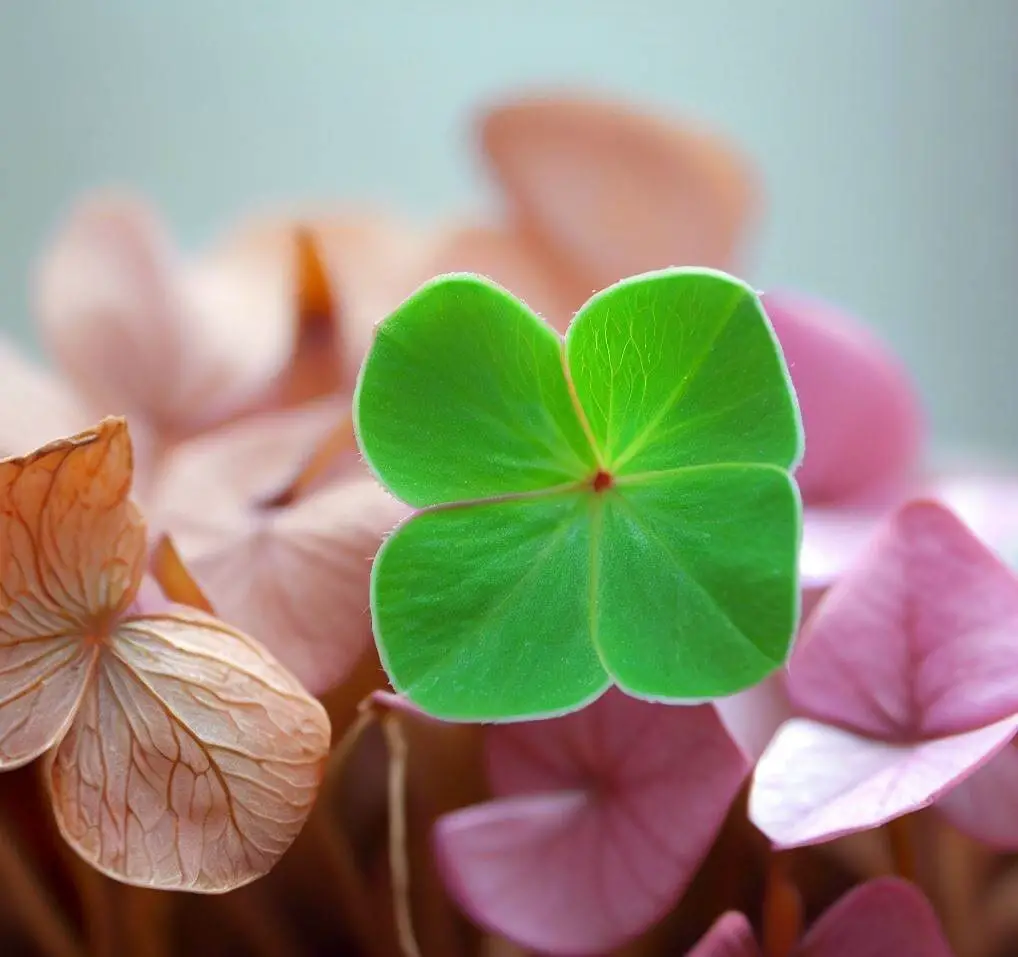Oxalis triangularis dormancy care and period refers to the care and duration of the dormancy period in Oxalis triangularis.
Oxalis triangularis is a plant that undergoes a dormancy period, which is a natural resting phase where the plant becomes inactive. During this dormancy period, the plant’s foliage naturally turns yellow and dries out, entering a dormant state.
Taking care of Oxalis triangularis during dormancy involves certain considerations. Here are some key points:
Reduced watering
During the dormancy period, it is important to minimize watering. Keep the soil moderately moist but avoid over-watering or allowing the plant to sit in water.
Storage location
Place Oxalis triangularis in a cool and dark environment. Typically, indoors, you can keep it in a room with lower temperatures. This is an important reason that we will need to understand it.
By providing appropriate care during the dormancy period, you can help ensure the health and well-being of Oxalis triangularis until it emerges from dormancy and resumes its growth.
Oxalis triangularis, commonly known as the “Purple Shamrock” or “False Shamrock,” is a perennial plant species native to Brazil. It belongs to the Oxalidaceae family, which includes hundreds of different Oxalis species.
Oxalis triangularis is known for its attractive foliage, consisting of three triangular-shaped leaflets that give it its common name. The leaves are typically deep purple or burgundy in color, although there are variations with green or variegated foliage. The plant grows from a bulb-like structure called a corm.
In addition to its distinctive foliage, Oxalis triangularis produces delicate pink or white flowers on tall stems. The flowers bloom sporadically throughout the year, adding an extra touch of beauty to the plant.
Oxalis triangularis is a popular houseplant and is often grown for its ornamental value. It is relatively easy to care for and can thrive both indoors and outdoors, depending on the climate. It prefers bright, indirect light and moist, well-draining soil.
| Period | Care |
|---|---|
| Active Growth Season (Late Spring – Early Fall) | Keep the plant in a bright location but out of direct sunlight. Water regularly, keeping the soil moist but not waterlogged. Fertilize every 2-3 weeks with a balanced plant food. |
| Pre-Dormancy (Late Fall) | Begin to reduce watering as the plant starts to fade and leaves begin to drop. |
| Dormancy (Winter) | Stop watering completely and allow the plant to rest. The bulb can be stored in a cool, dry, dark place if desired. It’s normal for the plant to lose all its leaves during this time. |
| Post-Dormancy (Early Spring) | Begin to water lightly once new growth appears. Move the plant back to a bright location and resume regular watering once the plant is fully awake. |
What is dormancy care and period?
Dormancy care refers to the specific actions and conditions required to properly care for a plant during its dormant period. Dormancy is a natural physiological state that certain plants enter in response to environmental cues such as temperature, light, or water availability. During dormancy, plants reduce their metabolic activity and growth, conserving energy and resources.

Dormancy care varies depending on the specific plant species and its dormancy requirements. However, some common aspects of dormancy care include:
-
Watering
Adjusting the watering schedule during dormancy is important. Many plants require reduced watering or even a period of dryness to simulate natural conditions. However, it is crucial to prevent the plant from completely drying out, as this can harm its survival.
-
Light
Light requirements may differ during dormancy. Some plants benefit from reduced light exposure, while others may need a period of darkness. Understanding the specific light needs of a plant during dormancy is essential for its well-being.
-
Temperature
Temperature plays a significant role in plant dormancy. Some plants require a cold period to break dormancy, while others may require warmer temperatures. Maintaining the appropriate temperature range is crucial for successful dormancy care.
-
Pruning
Pruning can be performed during dormancy to remove dead or damaged parts of the plant. This helps promote overall plant health and prepares it for active growth when dormancy ends.
The dormancy period refers to the length of time a plant remains dormant. This period can vary greatly among plant species, ranging from a few weeks to several months. Understanding the specific dormancy period of a plant is important for providing the right care and ensuring its successful transition from dormancy to active growth.
It’s important to note that not all plants go through dormancy. Dormancy is more commonly observed in perennial plants, deciduous trees, and some bulbs, while evergreen plants may have more subtle periods of reduced growth. Based on what reasons we can implement the dormancy care and period on oxalis triangularis The implementation of dormancy care and period for Oxalis triangularis can be based on several factors.
Here are some reasons why implementing dormancy care and period for Oxalis triangularis may be beneficial:
-
Natural Growth Cycle
Oxalis triangularis, like many plants, has a natural growth cycle that includes a period of dormancy. Mimicking this natural cycle by providing dormancy care allows the plant to rest and conserve energy, promoting its overall health and vitality.
-
Environmental Adaptation
Oxalis triangularis is native to regions with distinct seasonal changes, including periods of colder temperatures and reduced light. By providing dormancy care, you are helping the plant adapt to its natural environment, even when grown indoors.
-
Promoting Flowering
Dormancy care can also play a role in promoting flowering in Oxalis triangularis. Some plants require a period of dormancy to trigger the formation of flower buds. By providing the necessary dormancy conditions, you increase the chances of the plant producing beautiful blooms when it emerges from dormancy.
-
Plant Longevity
Implementing dormancy care and period can contribute to the long-term health and longevity of Oxalis triangularis. The dormant phase allows the plant to rejuvenate, strengthen its root system, and prepare for new growth cycles. This can result in a healthier and more resilient plant over time.
Remember that specific dormancy care requirements for Oxalis triangularis may vary depending on the plant’s individual needs, environmental conditions, and geographic location. It’s always a good idea to research and understand the specific care guidelines for your Oxalis triangularis to ensure its optimal health and successful dormancy cycle.

where is the best place for dormancy care and period for oxalis triangularis?
The best place for providing dormancy care and period for Oxalis triangularis is typically in a cool and dark location. Here are some guidelines for choosing the ideal spot:
-
Temperature
Oxalis triangularis benefits from cooler temperatures during dormancy. Aim for a temperature range of around 50°F to 60°F (10°C to 15°C). This can be achieved in a cool room, basement, or even a refrigerator set to the appropriate temperature if it is well-ventilated and does not contain fruits or vegetables that emit ethylene gas.
-
Light
During dormancy, Oxalis triangularis prefers reduced light exposure or even a period of darkness. Avoid placing the plant in direct sunlight or areas with bright artificial light. However, be sure to strike a balance by providing some dim light to prevent the plant from becoming etiolated or overly elongated.
-
Humidity and Air Circulation
While Oxalis triangularis prefers slightly higher humidity levels during active growth, it’s generally best to provide moderate humidity during dormancy. Ensure proper air circulation to prevent excessive moisture buildup, which can lead to fungal issues.
-
Storage Container
If you choose to store the plant in a container during dormancy, make sure it has drainage holes to prevent waterlogging. Use a well-draining potting mix suitable for Oxalis triangularis.
Remember to reduce watering during dormancy, allowing the soil to dry out slightly between waterings. Monitor the plant regularly to ensure it doesn’t completely dry out or become overly damp.
It’s important to note that the specific dormancy care requirements may vary depending on your climate, local conditions, and the specific needs of your Oxalis triangularis. Always observe the plant and make adjustments as needed to provide the most suitable environment for its dormancy period.
what is the best food for oxalis triangularis during the dormancy care period?
During the dormancy period, Oxalis triangularis undergoes a period of reduced growth and metabolic activity. Consequently, its nutritional needs are significantly lower compared to when it is actively growing. Therefore, providing fertilizer or food during dormancy is generally not necessary.
It is generally recommended to refrain from fertilizing Oxalis triangularis during dormancy. Overfeeding or providing excessive nutrients during this period can potentially disrupt the natural dormancy cycle or lead to imbalances that may harm the plant.
Instead, focus on providing the appropriate environmental conditions for dormancy care, such as proper temperature, light, and watering practices. These factors play a more significant role in ensuring the successful dormancy and subsequent growth of Oxalis triangularis.
Once the dormancy period ends and the plant starts showing signs of active growth, you can resume regular fertilization using a balanced, diluted houseplant fertilizer according to the manufacturer’s instructions. This will help provide the necessary nutrients to support healthy growth and development.

How can we maintain oxalis triangularis during the dormancy care period?
To maintain Oxalis triangularis during the dormancy care period, here are some key practices to follow:
-
Watering
Reduce the frequency of watering during dormancy. Allow the soil to dry out slightly between waterings, but avoid letting it become completely dry. Aim to keep the soil lightly moist rather than wet. Adjust watering based on the specific needs of your plant and the environmental conditions.
-
Light
During dormancy, Oxalis triangularis prefers reduced light exposure or even a period of darkness. Place the plant in a cool and dark location away from direct sunlight or bright artificial light. This helps simulate natural conditions and promotes proper dormancy.
-
Temperature
Provide a cool environment for Oxalis triangularis during dormancy. Aim for temperatures around 50°F to 60°F (10°C to 15°C). Keep the plant away from drafts or extreme temperature fluctuations, as this can negatively affect its dormancy period.
-
Pruning and Maintenance
During dormancy, it’s a good time to inspect the plant for any signs of disease or pests. Remove any dead or yellowing foliage to maintain overall plant health. However, avoid heavy pruning or disturbing the bulb or corm.
-
Storage
If desired, you can store the dormant Oxalis triangularis bulb or corm in a cool, dry, and dark place during its dormancy period. Ensure proper ventilation to prevent rot or excessive moisture buildup. Consider using a breathable storage bag or container.
-
Monitoring
Regularly check on the plant to ensure it remains healthy during dormancy. Monitor the moisture level of the soil, inspect for signs of pests or disease, and adjust care practices accordingly.
the specific dormancy care requirements may vary based on factors such as your climate, local conditions, and the specific needs of your Oxalis triangularis. Observing and understanding your plant’s responses will help you provide the most suitable care during its dormancy period.
How do we know that Oxalis triangularis need dormancy and care?
Oxalis triangularis, like many plants, typically goes through a natural dormancy period. Here are some signs that indicate your Oxalis triangularis may need dormancy and care:
-
Seasonal Cues
Oxalis triangularis often exhibits a natural growth cycle that aligns with the changing seasons. If you notice that your plant tends to show reduced growth or stops producing new foliage and flowers during a specific time of year, it is likely entering a dormant phase.
-
Foliage Changes
During dormancy, the foliage of Oxalis triangularis may start to yellow, wither, or become less vibrant in color. This is a normal response as the plant conserves energy and prepares for its dormant period.
-
Growth Slowdown
Oxalis triangularis may exhibit a noticeable slowdown in growth or stop producing new shoots and leaves during dormancy. This reduced growth is a typical indication that the plant is entering its dormant phase.
-
Resting Period
If your Oxalis triangularis has been actively growing for an extended period and has not been exposed to a period of dormancy for several years, it is beneficial to provide it with a period of rest to mimic its natural growth cycle.
It’s important to note that not all Oxalis triangularis plants may exhibit dormancy cues in the same way, and some variations in growth patterns may occur. Additionally, factors such as climate and environmental conditions can influence the dormancy needs of the plant.
Observing the natural patterns and behavior of your Oxalis triangularis, as well as understanding its native habitat and growth habits, will help you determine when it may require dormancy and care. Consulting care guides specific to Oxalis triangularis can also provide valuable insights into the plant’s dormancy requirements.
How long do oxalis need to be dormant?
Oxalis species thrive in cool conditions, particularly during bloom, and bright light indoors. A bright sunny window with a temperature of 75ºF during the day and 15-25 degrees cooler at night is ideal. Keep the soil moist but not wet, and fertilize monthly when plants are actively growing. they have few pests, but aphids or whiteflies may occasionally infest them.
Plants will decline after a few months, usually during summer. To prevent this, allow the “Shamrock” Oxalis species to go into dormancy. When leaves die back, stop watering, allow the leaves to dry out, and remove the dead leaves. Place the container in a cool, dark spot for 2-3 months, then return to the bright window and water again. Place the bulbs just under the soil surface in a well-drained soilless medium. New growth should emerge soon thereafter.
Oxalis can be propagated by dividing the many small bulbs, which can be potted up in small groups.
How do you keep oxalis over the winter?
Oxalis plants thrive in warm, sunny conditions, with temperatures around 60 degrees F. Keep the potting soil moist but not overly moist, and water only when the soil feels dry. Fertilize the plant monthly during the growing season with a water-soluble houseplant fertilizer, but not during fall and winter. When the plant wilted, stop watering and place it in a cool, dark room for up to three months. When new leaves sprout, return the plant to bright light and resume regular watering and fertilization.
How do you take care of oxalis in the summer?
In summer, Oxalis do best in very bright indirect sunlight and can also handle direct sunlight through a window. However, if kept outside, it cannot tolerate direct light and should be kept in the shade. Water when 50-75% of the soil is dry. Water thoroughly until it comes out of the drainage hole.
Conclusion
In this article, we discussed oxalis triangularis dormancy care and period which can have some reason and we mentioned in this article that can be important.
if you want to know more about oxalis plants read these articles:











